The Volkswagen Golf, now in its eighth generation, has been seen as the great all-rounder for over 45 years, and the GTI has long been regarded as one of, if not the, best hot hatches. We have the GTI for review later this year, but to tide us over, Volkswagen gave us the TSi R-Line for a week to see what we thought.
Is the Golf still a great family car, or have SUVs taken away its thunder?
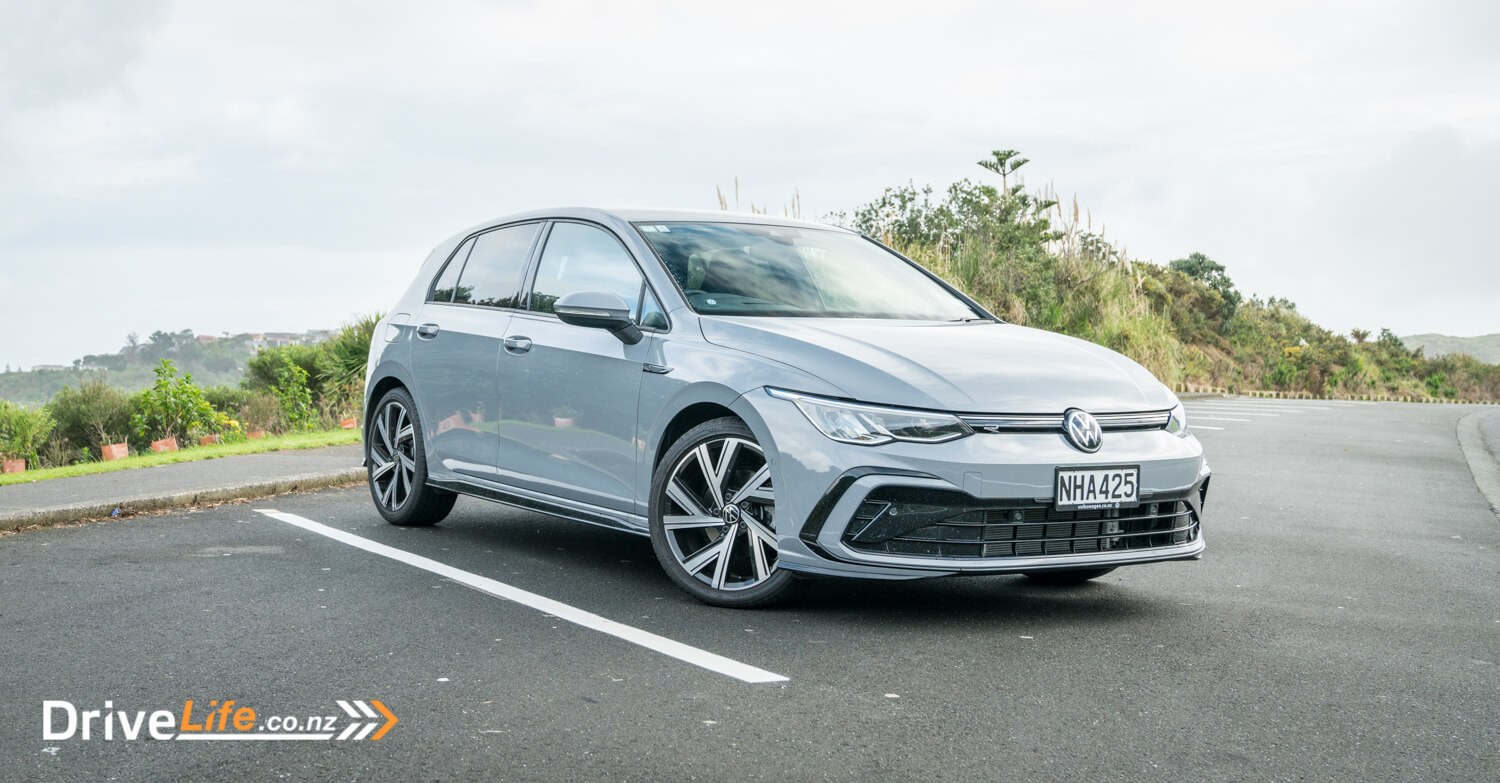
What’s In The 2021 Volkswagen Golf Range?
There are three models in the Golf 8 range, with the Golf R to be added in future. The range starts with the Golf TSI Life at $37,990, featuring 17” Alloys, LED Headlights with Light Assist, Front Assist (Autonomous Emergency Braking), Pedestrian & Cyclist monitoring, Lane Assist (Lane Keeping System), Side Assist (Blind Spot Monitor), Adaptive Cruise Control (ACC), 8” Composition Media Infotainment System, 10.25” Active Info Display ‘Pro’, App-Connect (Android Auto & Apple CarPlay), Wireless Charging (Qi enabled devices), KESSY: Keyless entry with Push Button Start, and 10-colour ambient lighting.
Next up is the Golf TSI R-Line reviewed here, at $47,990. This adds the following to the Life spec: 18” Alloys, Travel Assist & Emergency Assist, 10” Discover Media Satellite Navigation, Heads-up Display (HUD), Wireless App-Connect (Android Auto & Apple CarPlay), R-Line exclusive exterior & interior, R-Line sports front seats, 30-colour ambient lighting, Climatronic 3-zone air conditioning, Progressive Steering, Driving Profile Selection (Eco, Comfort, Sport and Individual), and sports suspension.
The Life and R-Line both have a 4-cylinder 1.4-litre turbo engine producing 110kW of power and 250Nm of torque via an 8-speed automatic transmission and the front wheels.
Finally the Golf GTI, at $61,490 it adds to the R-Line spec with different 18″ Alloys, Dynamic Chassis Control, Electromechanical Differential Lock (e-LSD), LED Plus headlights, Exterior Ambient lighting with front grill LED lightstrip, GTI exclusive exterior & interior, ‘Jacara Red’ fabric sports front seats.
The GTI has a 180kW/370Nm 2-litre 4-cylinder engine. Transmission is a 7-Speed DSG driving the front wheels.
Colours available on the Life and R-Line are: Pure White, Oryx White Pearlescent ($1,500), Dolphin Grey Metallic, Moonstone Grey as seen on our review car, Kings Red Metallic ($500), Atlantic Blue Metallic, Lime Yellow Metallic ($500), Deep Black Pearlescent, Urano Grey, Reflex Silver Metallic.
You can read more about the Golf on Volkswagen’s website here.
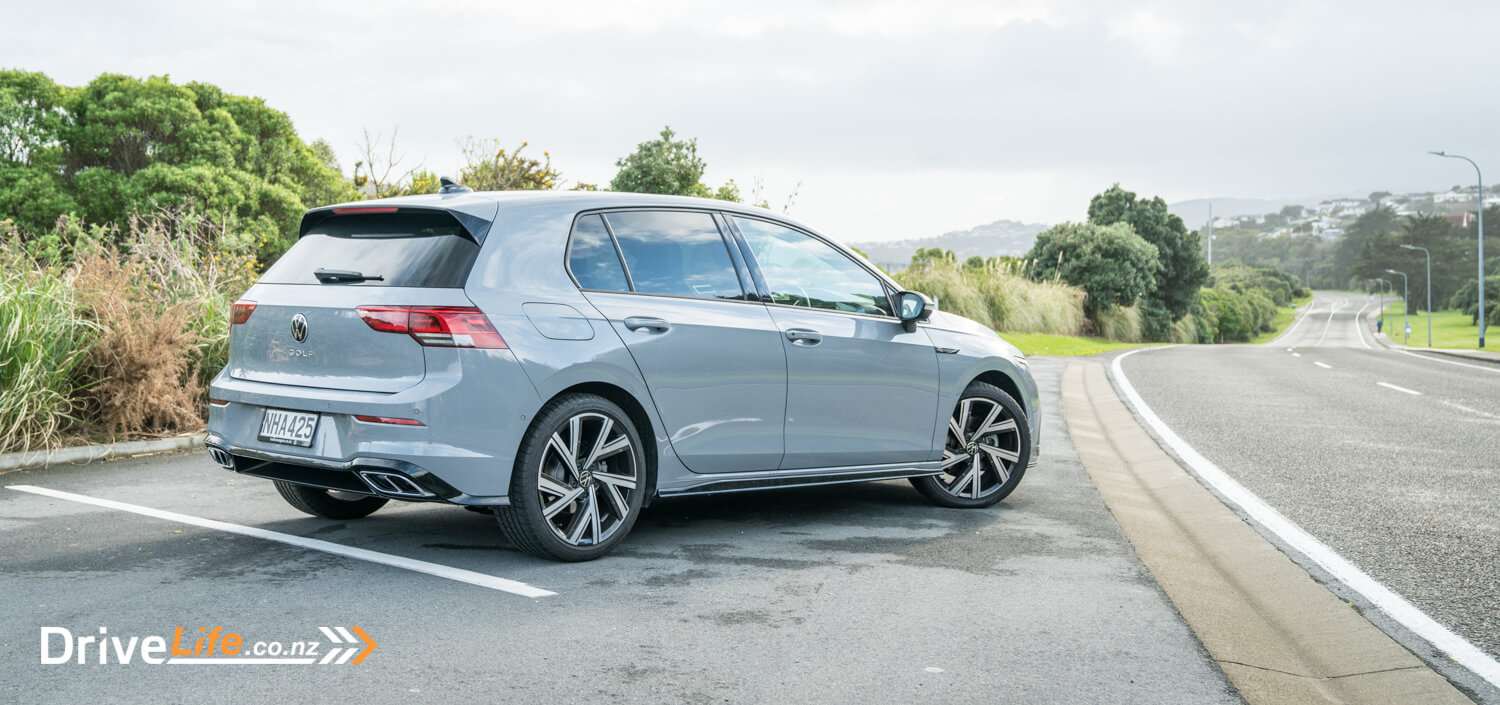
What’s Our First Impressions Of The 2021 Volkswagen Golf TSi R-Line?
There’s no denying that the Golf is a smart, modern-looking hatchback. The Golf DNA is clear in there from the previous generations. I like the swept-back edge of the headlights, the pleasingly-shaped tail lights. I like the word G O L F under the rear badge, the way they’ve made the badge multi-function as decoration, boot handle and pop-out reversing camera cover. The (totally fake) quad-exhaust trims look cool and sporty. But overall it didn’t grab me. Maybe it’s because our review car was in Moonstone Grey, Volkswagen’s version of the inexplicably popular flat grey that is fashionable at the minute.
A friend described it as “Volkswagen’s Corolla” and I can totally see that, except it’s not as adventurous a design as Toyota’s latest. Good for being understated, and slipping under the radar. Looks aside, the quality, fit and details are good. I like the way that as you approach, the Golf unlocks, unfolds its mirrors and puts on its illuminated door handles and puddle lights.
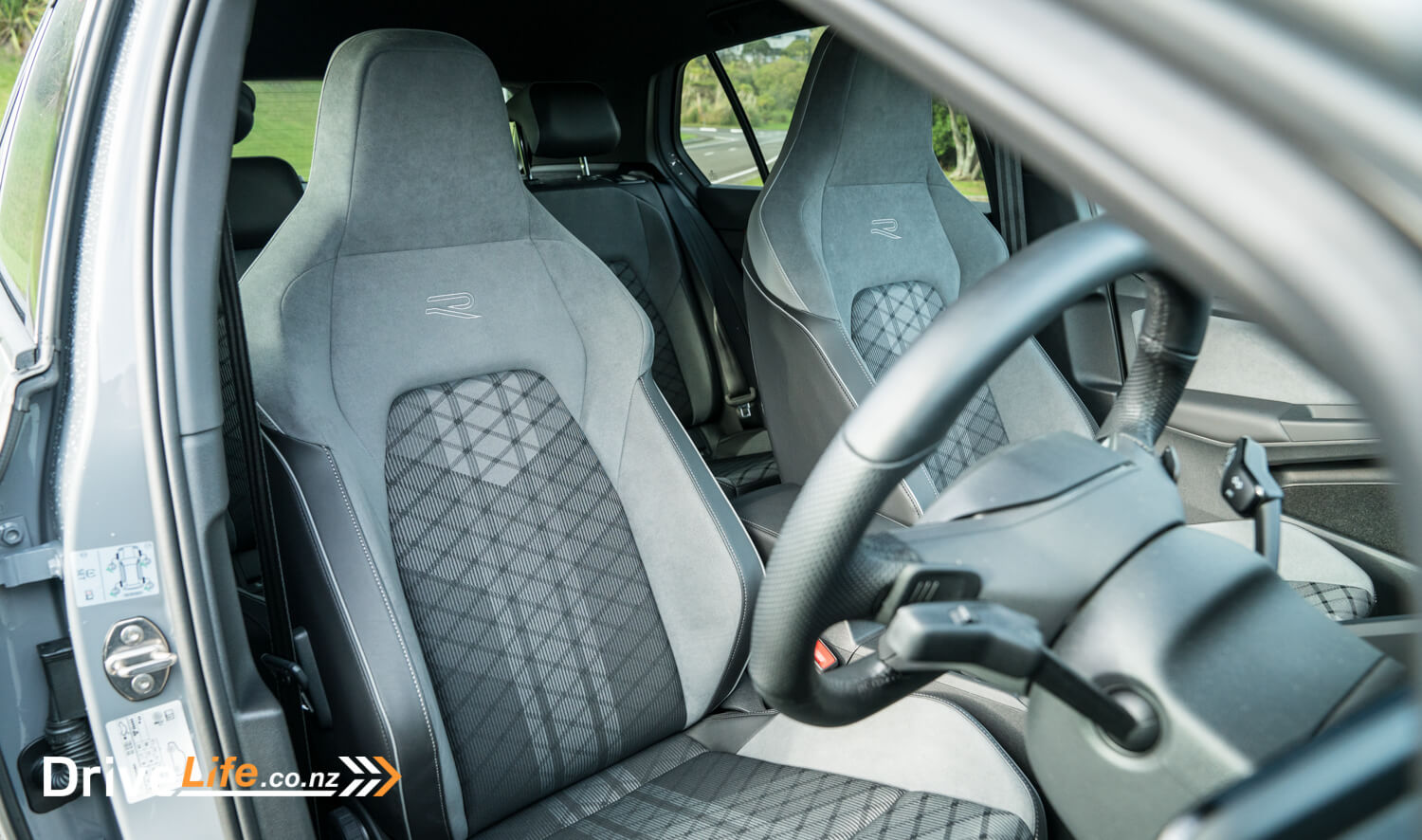
What’s The Interior Like On A 2021 Volkswagen Golf TSi R-Line?
The grey theme of our review car continues to the interior. It’s well-finished with solid plastics and some quality materials – not quite in 50 shades, but close. The R-Line seats are excellent, deep side bolsters, good support, and integrated headrests with R-Line logos. The centres are a cross-hatch pattern reminiscent of the older generation Golfs’ tartan and the sides and back are suede and leather. Despite the various patterns and contrasting stitching they work really well as a whole, and look excellent.
The driver is presented with a glossy black wrap-around cockpit integrating the main screen and the VW/Audi Virtual Cockpit display. The whole dash is very modern and minimal, with only touch controls on the dash and steering wheel. These take a little getting used-to but soon feel perfectly normal.
There’s a leather-wrapped flat-bottomed wheel with a chunky rim, but the diameter feels slightly smaller than the norm. I really liked it. The various buttons on the wheel are now just two touch panels, which control the smart cruise, audio, and adjustments for the virtual cockpit using a combination of touch, tap and finger slides, and providing haptic feedback. It sounds complicated but it’s designed well and is soon usable without glancing down.
I didn’t get on quite so well with the line of buttons directly under the main screen, in fact it took me a couple of days to notice them as they don’t light up. They are controls for the three-zone climate control, and a slider for sound volume. These functions can also be controlled from the main touch screen. The screen reacts when your hand is near, expanding on-screen controls to make them easier to see. There’s also gesture controls, though all I managed to do with these was accidentally swipe to the settings screen on several occasions when parking.
The main touch screen works basically like your phone, swipe left and right for more options, and use the various on-screen touch controls. All pretty easy to navigate, and there are many options you can set including 30 colours for ambient lighting and dash theme, with the ambient lighting split into two zones top and bottom.
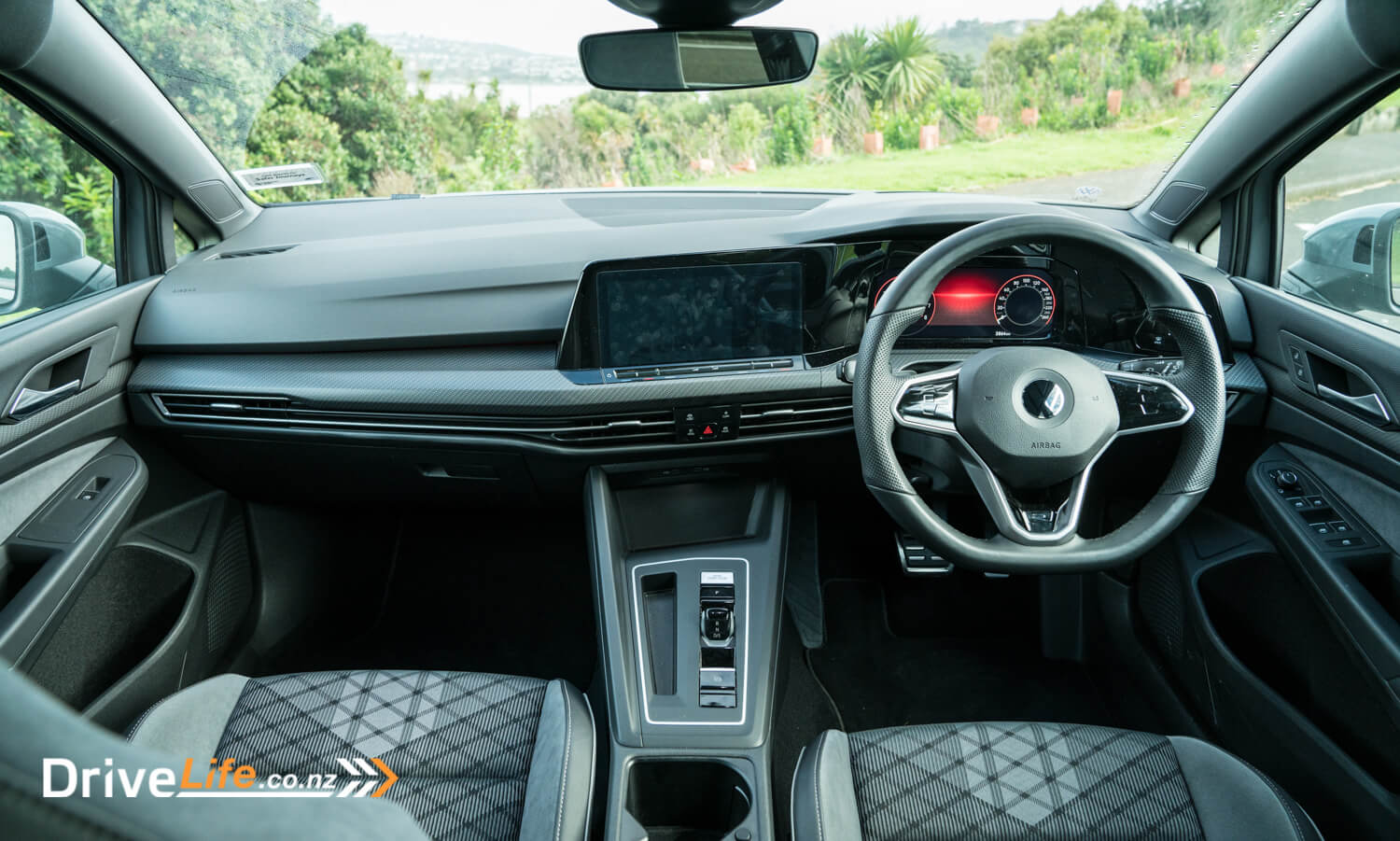
Sound quality from the stereo is very good, and it has Android Auto and wireless Apple Carplay if you’re a fan of such things. If not, the inbuilt satnav works well and screen quality is great. It’s responsive to touch, and the quality of the rear-view camera is very good. Bluetooth reconnects without drama, and it’s all quite seamless..
There are two USB-C sockets in the bottom of the dash, and a Qi wireless phone charger. Farther back by the cup holders there’s a 12-volt socket. The front cupholder can be folded away to allow slightly larger items to be stored, rotating back into place at the push of a button. There are also ample-sized door pockets, which are lined with fuzzy stuff to prevent rattles.
Rear legroom is good for this size of car, the seats are 60/40 split for load lugging, and (much to my daughter’s delight) there’s a ski hatch behind the rear centre armrest. She loves a ski hatch for some reason. Boot capacity is a respectable 381 litres, or 1,237 litres with the seats folded.
The boot floor can be raised up a few centimetres to get a flat load area. There’s a couple of bag hooks at the sides, and deeper side cubbies to stop your bottle of Sauv rolling around in the boot.
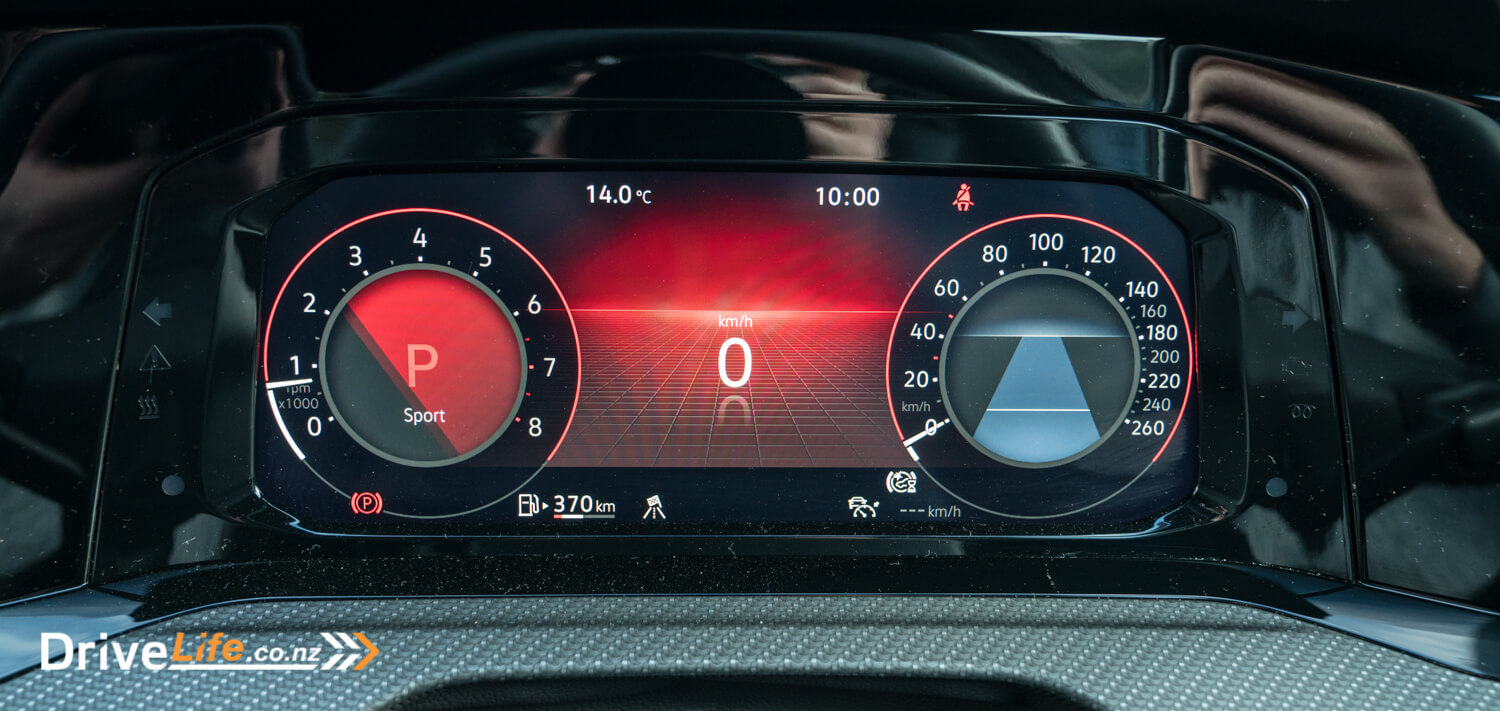
What Does The 2021 Volkswagen Golf TSi R-Line Drive Like?
Just before sitting in the Golf, I got out of the latest Volkswagen Tiguan, and though that was nice, as soon as I drove off in the Golf it made me feel much more at home “Yes,” I thought, “this is my sort of car”.
My first driving impression was that it felt low, taut and precise. There are four driving modes – Sport, Comfort, Eco and Individual. When I collected the Golf it was in Sport mode, and it felt just right. The suspension was firm, but not harsh on bumps, and handling felt really good. Quite flat on cornering, and happy to zip around the suburbs and city centre. I tried the other modes and strangely couldn’t feel much, if any, difference. Normally it’s pretty clear when you’re in Eco mode, for example, but not this time, so I left the car in Comfort.
On the motorway doing 100, the Golf was almost silent, barely any engine noise, road noise mostly well hidden apart from some tyre noise on rougher surfaces. Refinement generally is impressive in this car and a couple of passengers commented on how quiet it was.
When pushed a bit harder, there is a nice little growl from the 1.4-litre turbo 4-cylinder engine. Still pretty muted and as soon as you ease off it’s back to almost-silent. The 8-speed automatic transmission is excellent, so good I assumed it was a DSG. Barely noticeable shifts 95% of the time, but with occasional jerkiness at low speeds. Flick the little shifter downwards and it changes to Sport mode, or if you feel inclined, you can shift with the paddles behind the steering wheel.
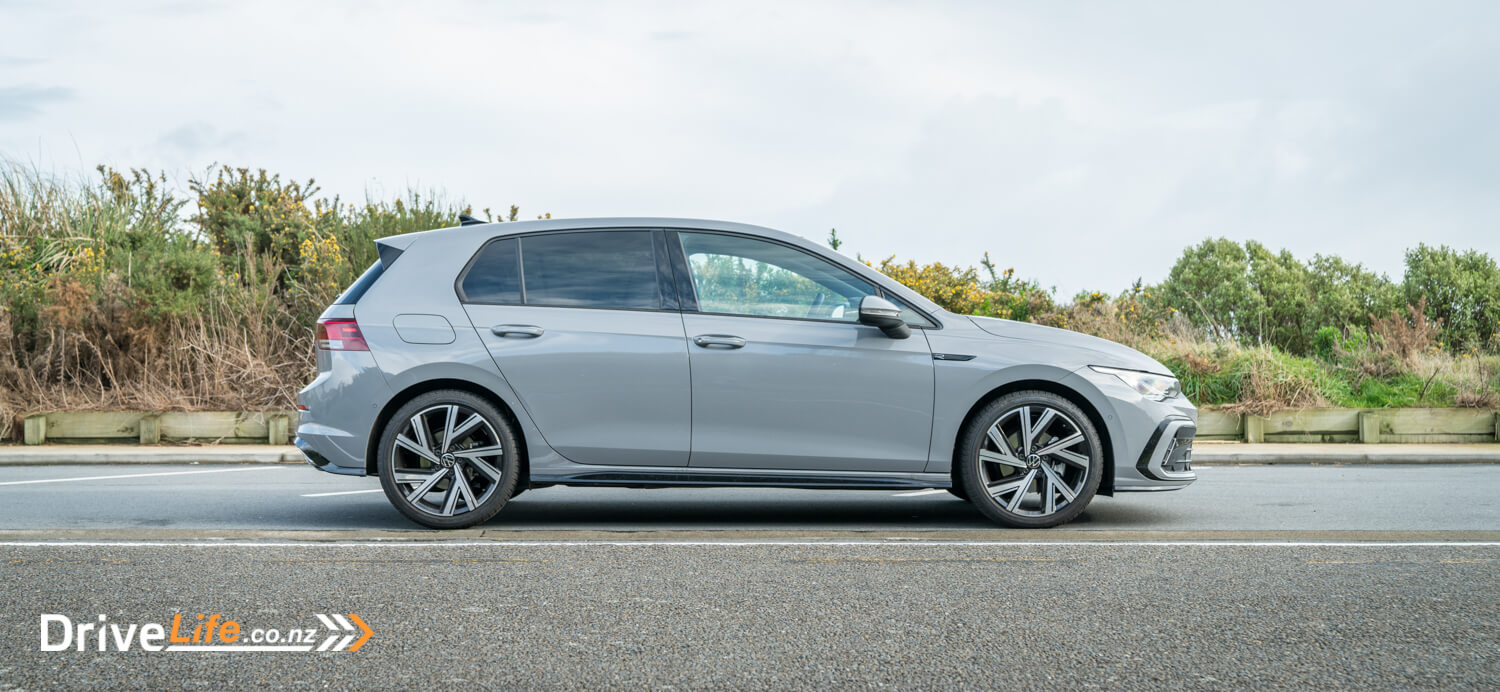
On a twistier back-road the Golf really comes alive, that small-capacity turbo engine giving a good amount of power to have some fun, combined with the great chassis and sharp steering. It can certainly put a smile on your face, and you’re held in nicely by those excellent R-Line seats.
Cruise control worked well down to a complete stop, with one irritation – the way it came to a stop. It seems like a little software tuning is needed as it tends to brake smoothly almost to a halt, ease off the brakes a little, then press harder again, coming to a quite jerky stop. Maybe something linked to the engine stop-start isn’t quite in sync. One thing I liked was that when stationary in traffic, with foot on the brake and engine stopped, if the car in front moved off, the Golf would sense this and start its engine, making for a smoother take-off. The downside of this was that if the car in front decided to move a few cm forward at a red light, as people do, it turned on my engine, wasting my fuel.
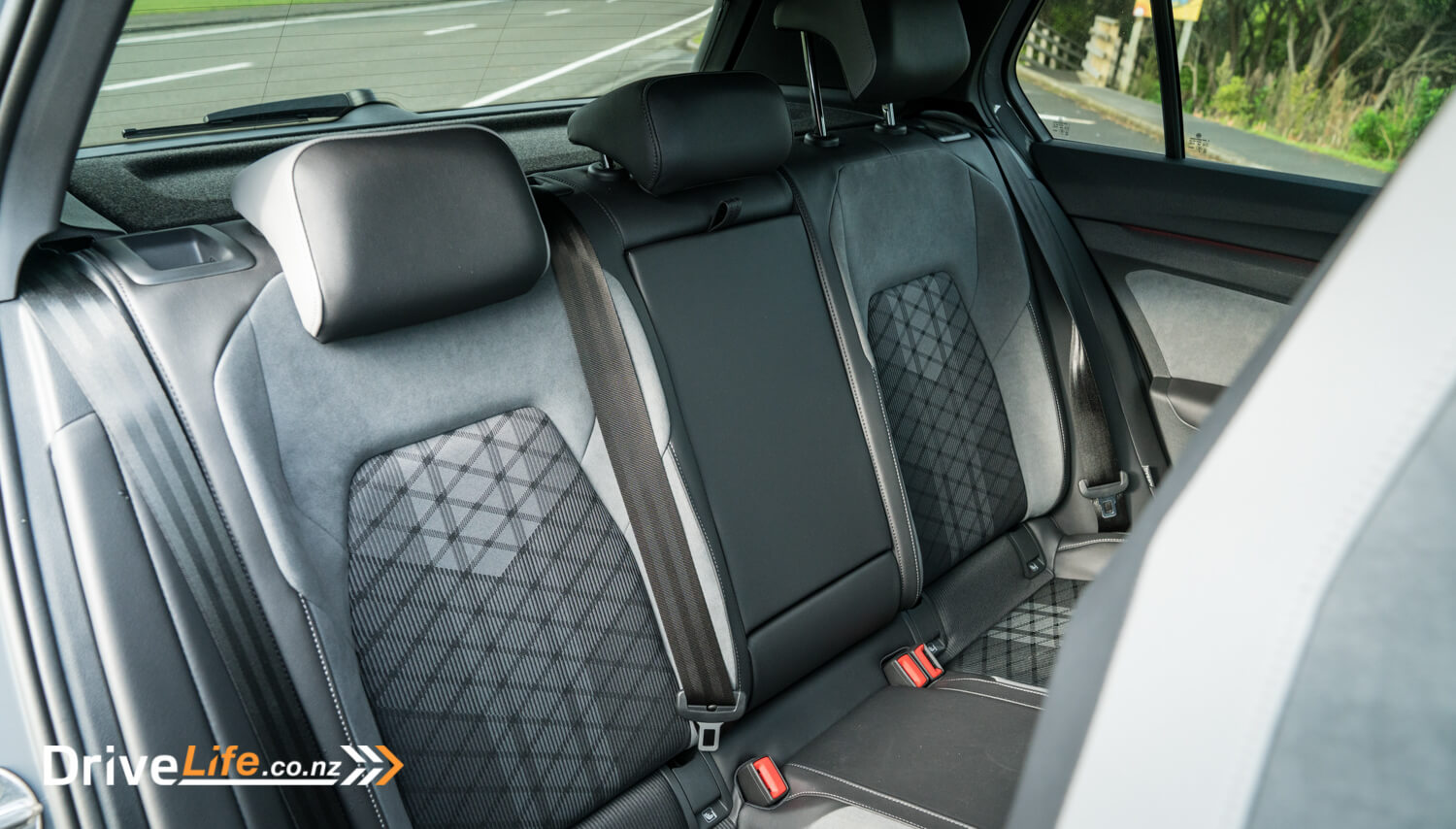
I did have an odd incident in stop-start traffic with the smart cruise on, where the Golf decided to accelerate hard from a stop towards the car in front 10m away, then flash its emergency “BRAKE!!” warning at me. I reacted quickly and braked, and I’m not sure if it would have done so itself or caused an accident.
While we’re talking about glitches, the Golf also did an emergency brake once when I was parallel parking. It hit the brakes so hard I thought I’d hit a post, but when I looked there was about a metre between me and any obstacle. I carried on and parked as normal. This was a one-off but incidents like this make you trust the autonomous systems less.
Most of the driving I did in the Golf was commuting and in traffic, with just a couple of slightly longer trips, so the fuel efficiency of 7.2l/100km was pretty good compared to the quoted 5.8l/100km.
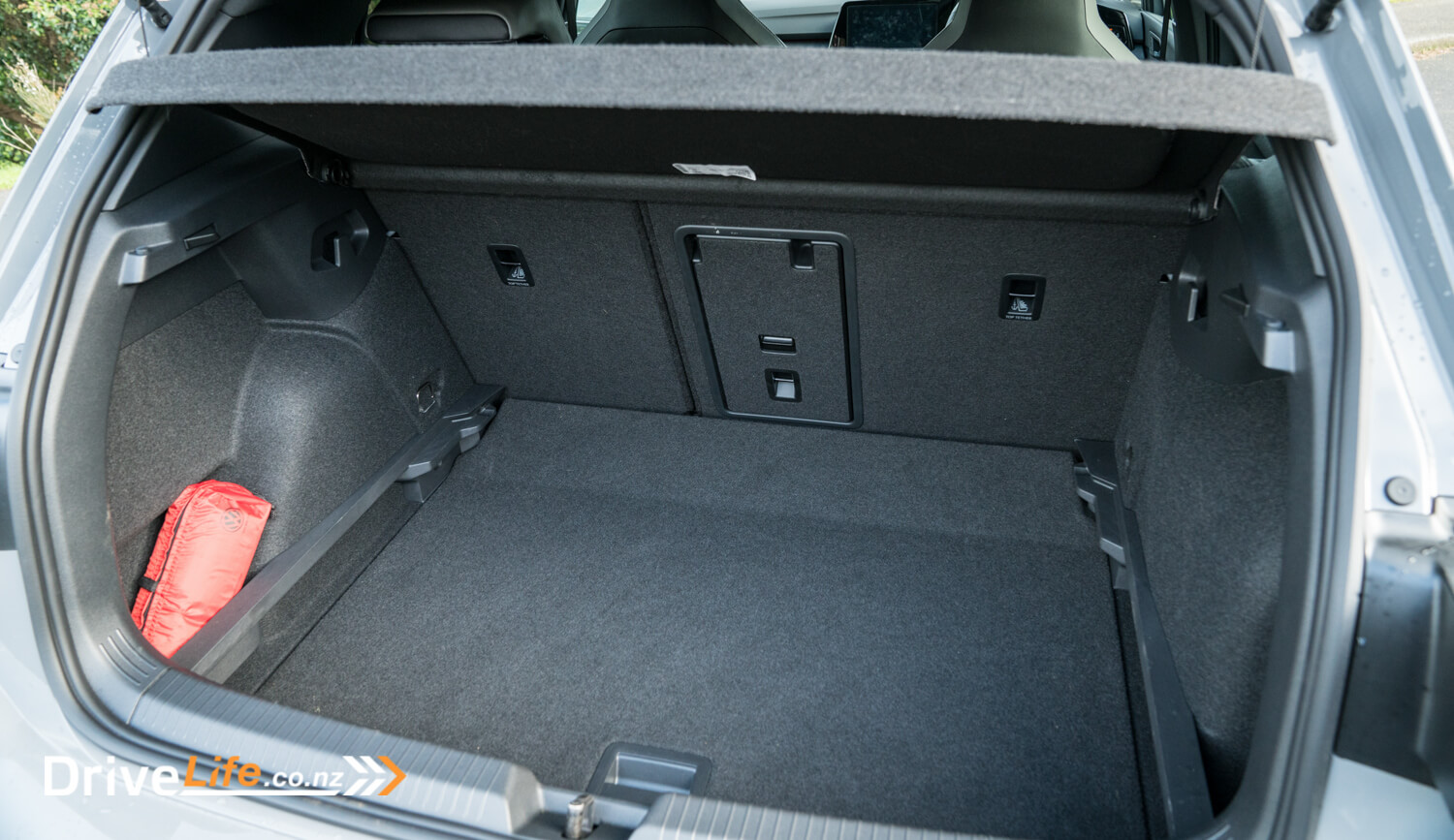
What’s The Competition For The 2021 Volkswagen Golf Tsi R-Line?
| Brand / Model | Engine | Power kW/Nm | Seats | Fuel L/100km | Boot Capacity Litres | Price |
| Audi A3 35 TFSI Advanced | 1.5-litre 4-cylinder turbo | 110/250 | 5 | 5.1 | 380 | $57,900 |
| Alfa Romeo Giulietta Veloce | 1.7-litre 4-cylinder turbo | 177/340 | 5 | 6.8 | 350 | $52,990 |
| BMW 118i Sport Line | 1.5-litre 3-cylinder turbo | 103/220 | 5 | 5.9 | 360 | $49,900 |
| Volkswagen Golf TSi R-Line | 1.4-litre 4-cylinder turbo | 110/250 | 5 | 5.8 | 381 | $47,900 |
| Seat Leon Sportstourer | 1.5-litre 4-cylinder turbo | 110/250 | 5 | 4.9 | 470 | $44,900 |
| Hyundai i30 N-Line | 1.6-litre 4-cylinder turbo | 150/265 | 5 | 7.1 | 395 | $44,990 |
| Ford Focus ST-Line | 1.5-litre 3-cylinder turbo | 134/240 | 5 | 6.4 | 375 | $42,990 |
| Honda Civic RS Sport Sensing | 1.5-litre 4-cylinder turbo | 127/220 | 5 | 6.4 | 478 | $41,990 |
| Mazda3 GTX | 2.5-litre 4-cylinder | 139/252 | 5 | 6.6 | 334 | $40,795 |
| Skoda Scala Style TSI | 1.5-litre 4-cylinder turbo | 110/250 | 5 | 5.7 | 467 | $39,990 |
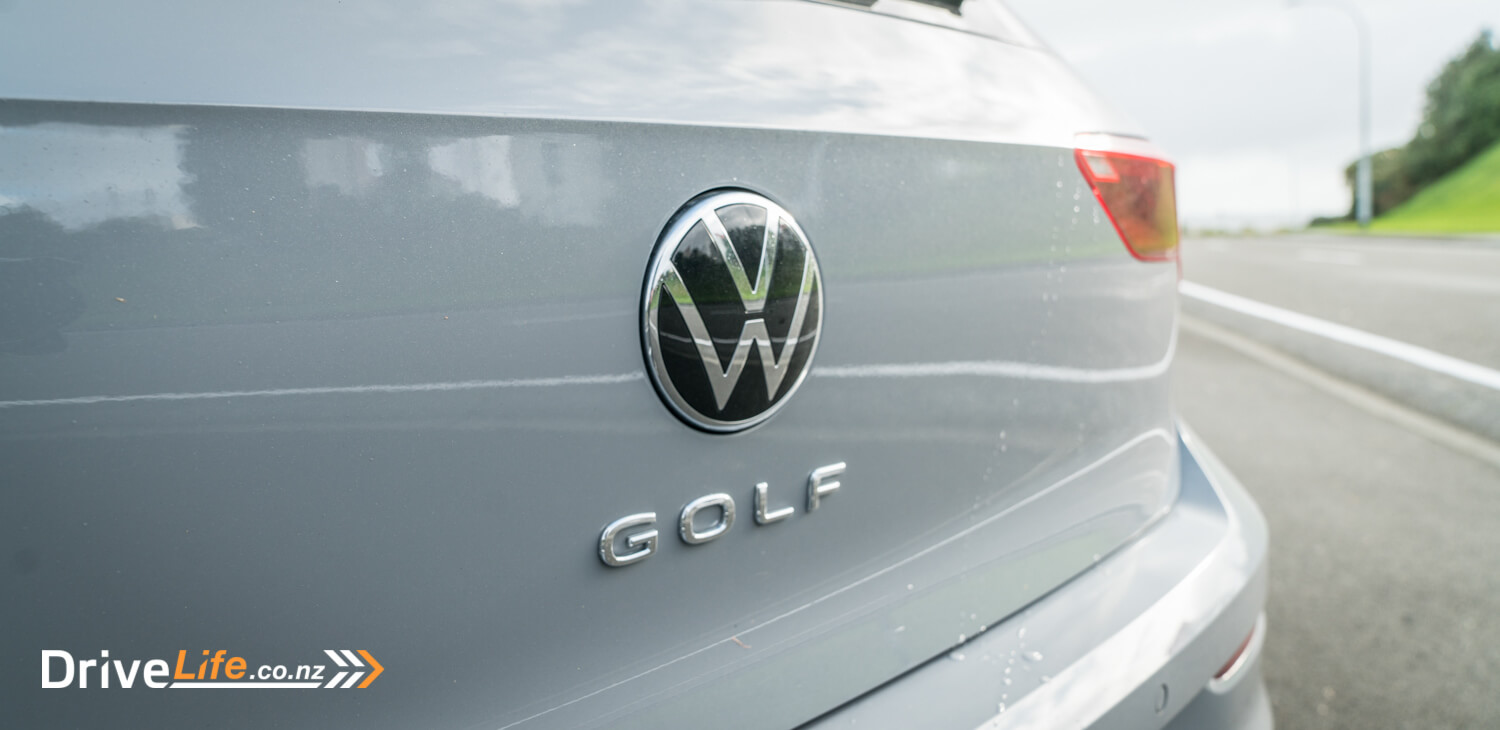
What’s The Pros and Cons of The 2021 Volkswagen Golf Tsi R-Line?
| Pros Build quality Perky performance Great handling, steering Quiet and refined Fun to drive Good stereo and tech | Cons Grey, grey, grey Looks a bit bland Tech glitches |
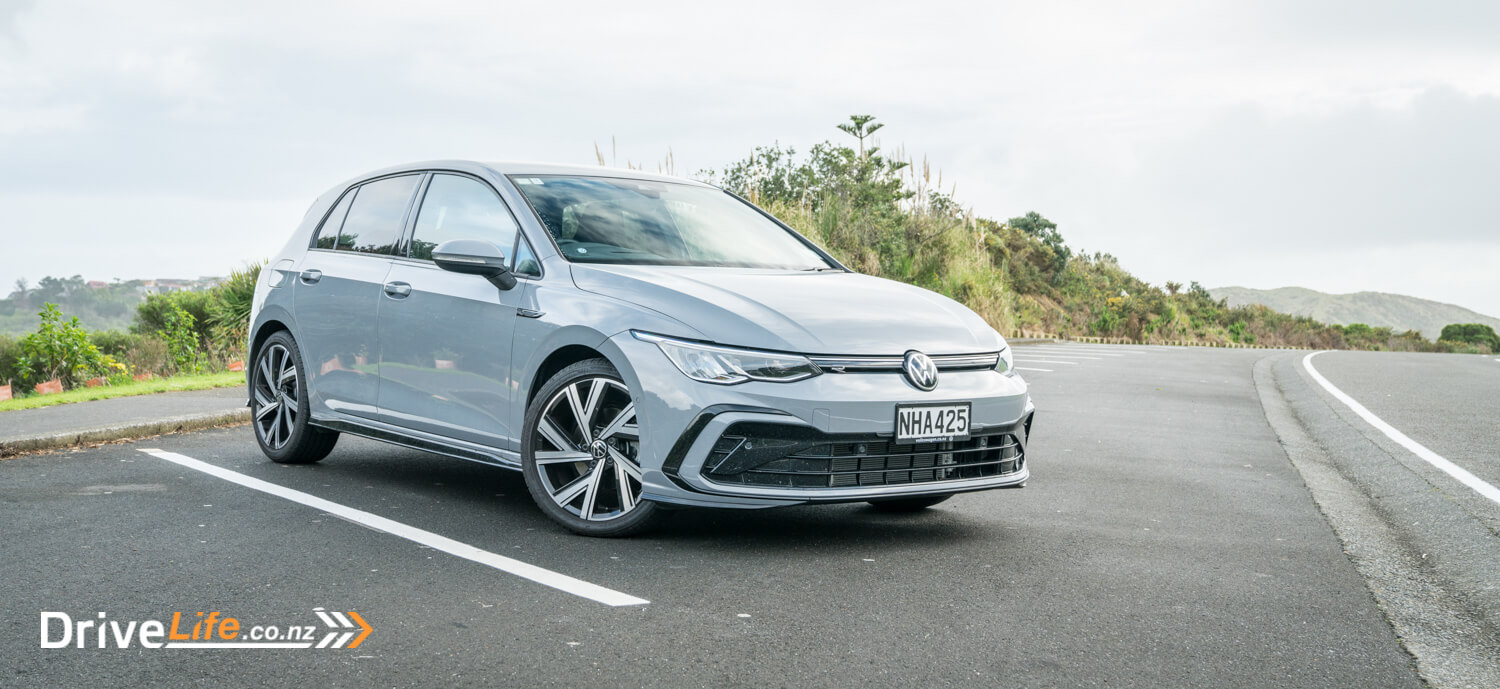
2021 Volkswagen Golf Tsi R-Line – Specifications
| Vehicle Type | Medium Hatchback |
| Starting Price | $47,900 |
| Price as Tested | $47,900 |
| Engine | 1.4-litre 4-cylinder turbocharged petrol |
| Power, Torque kW/Nm | 110/250 |
| Transmission | 8-speed automatic |
| Spare Wheel | Space saver |
| Kerb Weight, Kg | 1,340 |
| Length x Width x Height, mm | 4396 x 1789 x 1491 |
| Cargo Capacity, litres Seats up/seats down | 381/1237 |
| Fuel capacity, L | 50 |
| Efficiency, L/100Km | Advertised Spec – combined – 7.2 Real World Test – combined – 5.8 |
| Towing Capacity Kg, unbraked/braked | 660/1500 |
| Turning circle, metres | 10.9 Small: 6-10m / Medium 10-12m / Large 12m+ |
| Warranty | 5 year / 150,000 km mechanical warranty 5 year VW roadside assistance 12 year anti-corrosion warranty Volkswagen Care Plan – Scheduled Servicing for 3 years or up to 45,000km $1,395 Volkswagen Care Plan – Scheduled Servicing for 5 years or up to 75,000km $2,695 |
| ANCAP Safety Ratings | 5 stars |
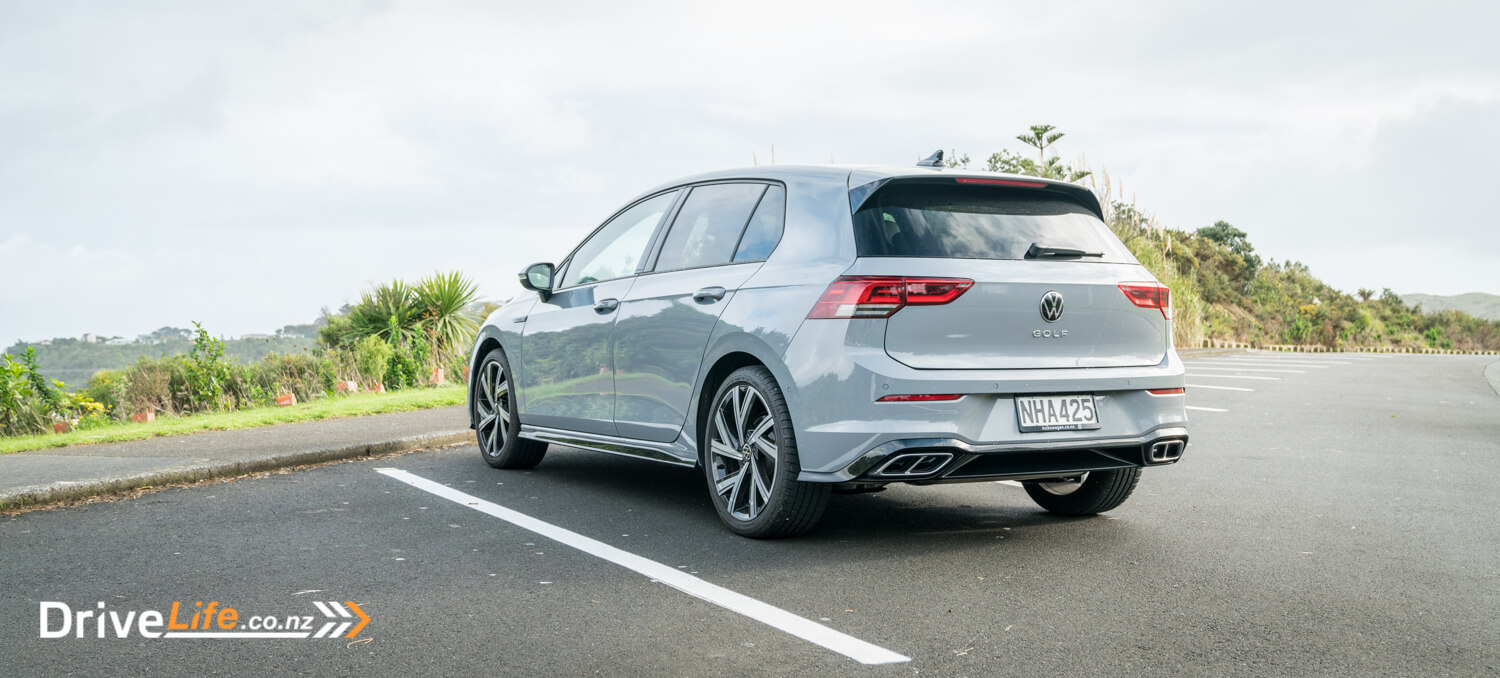
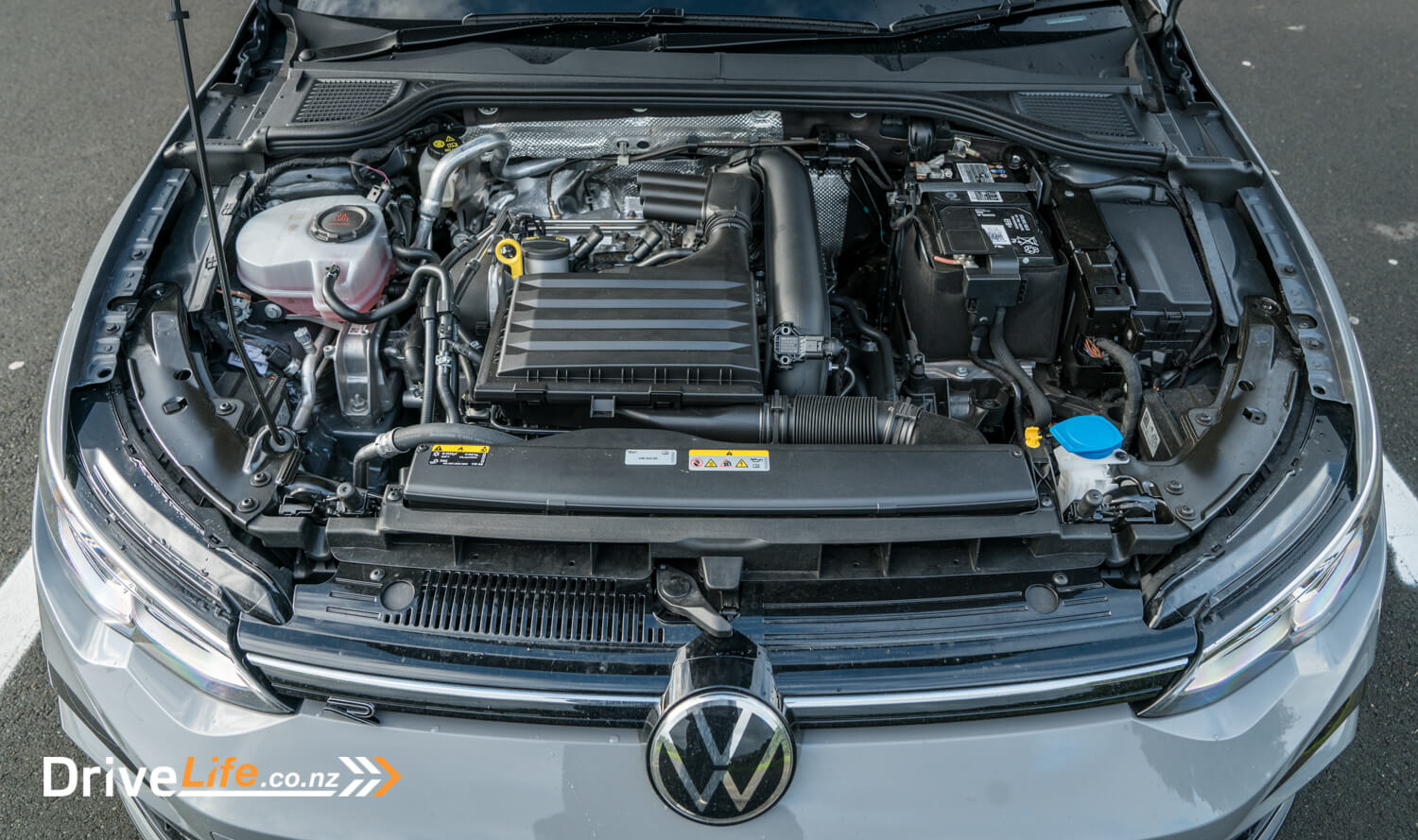
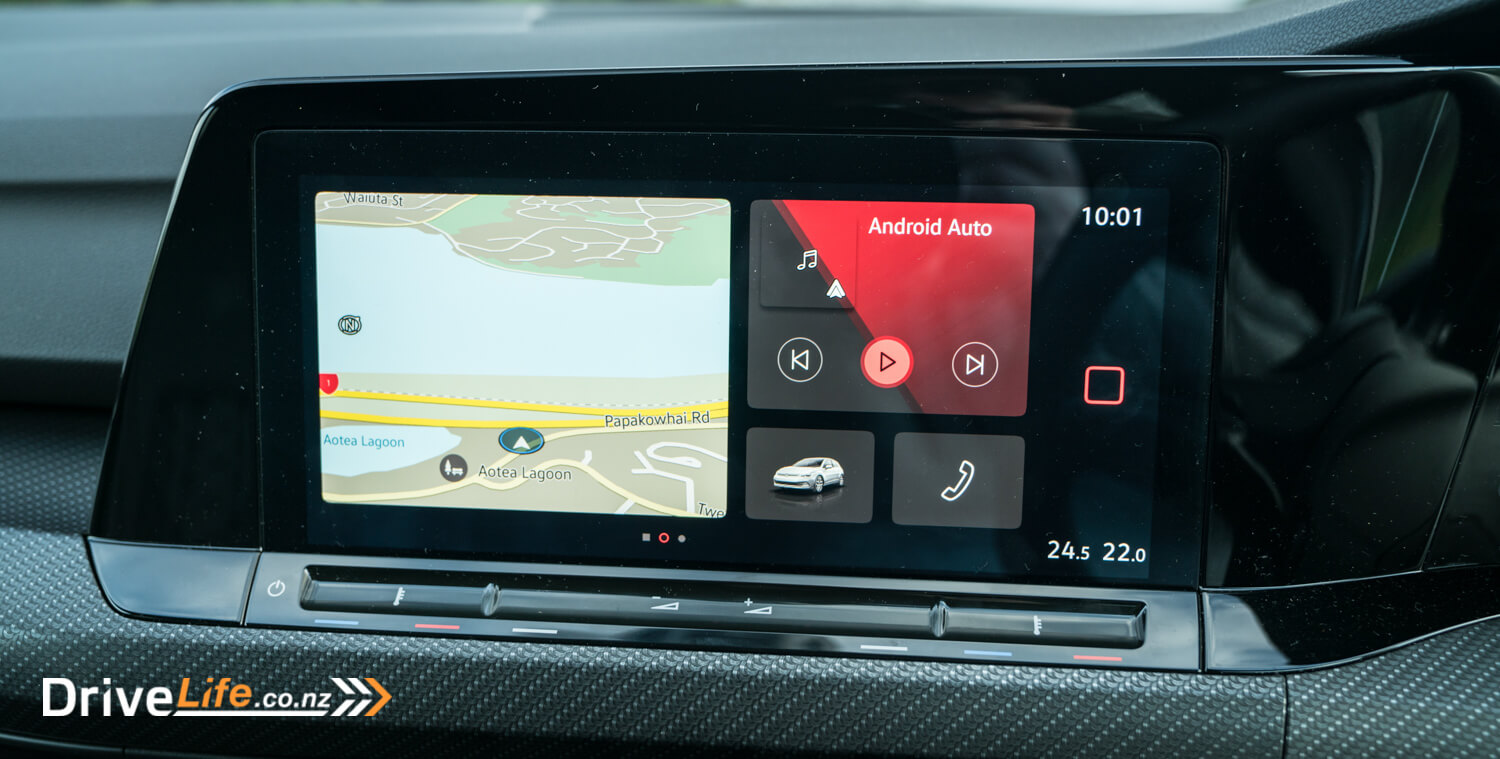
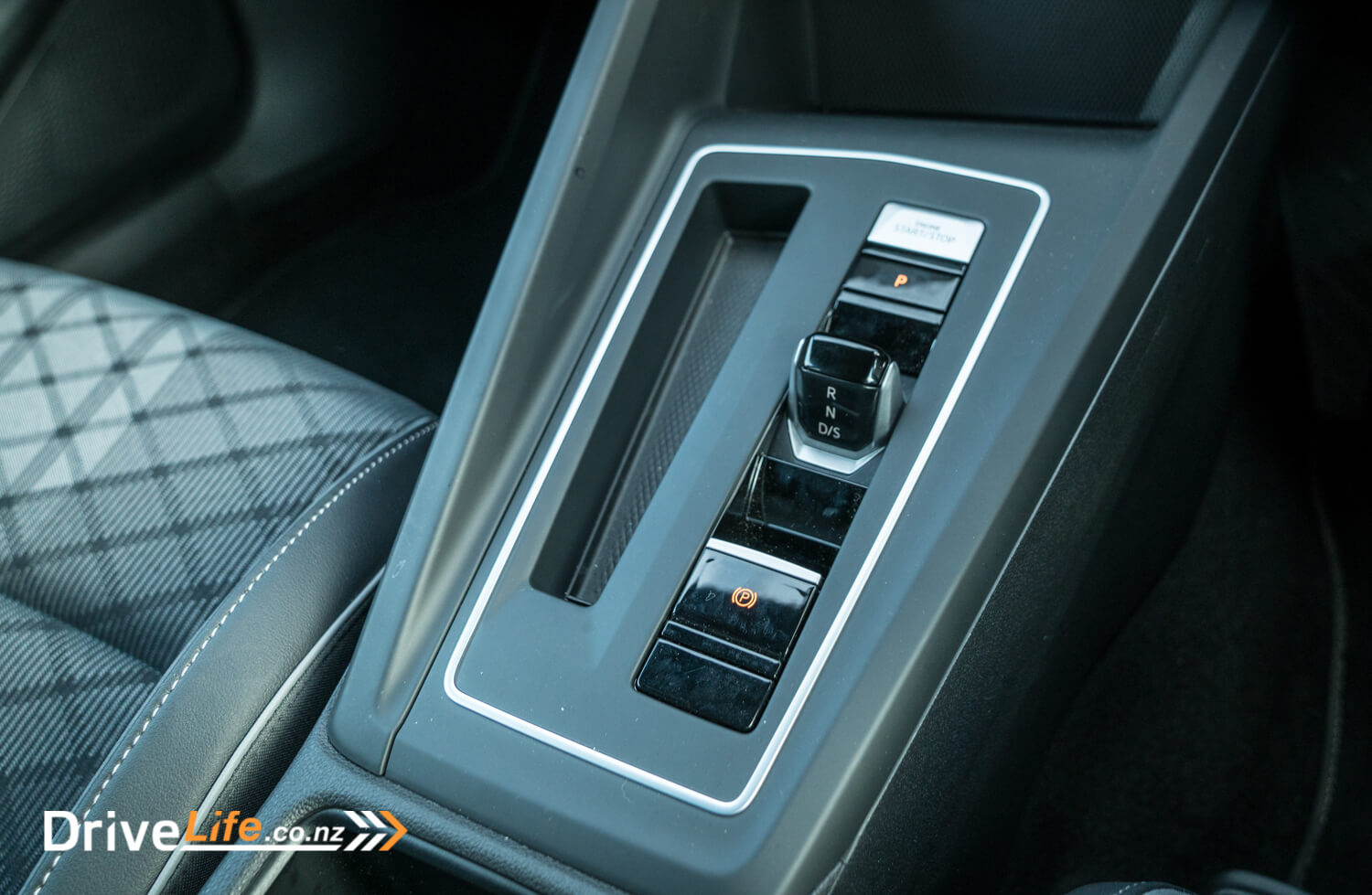
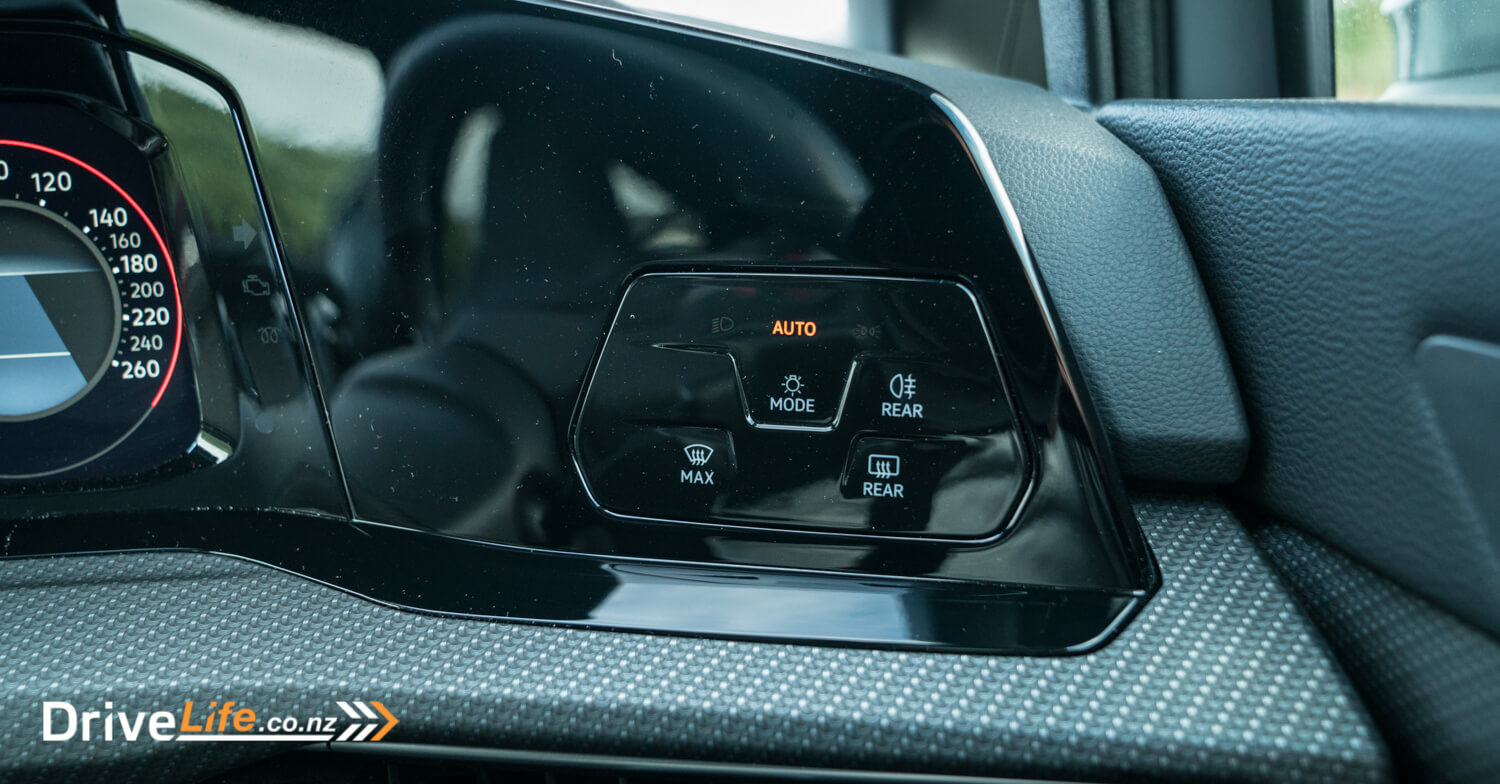
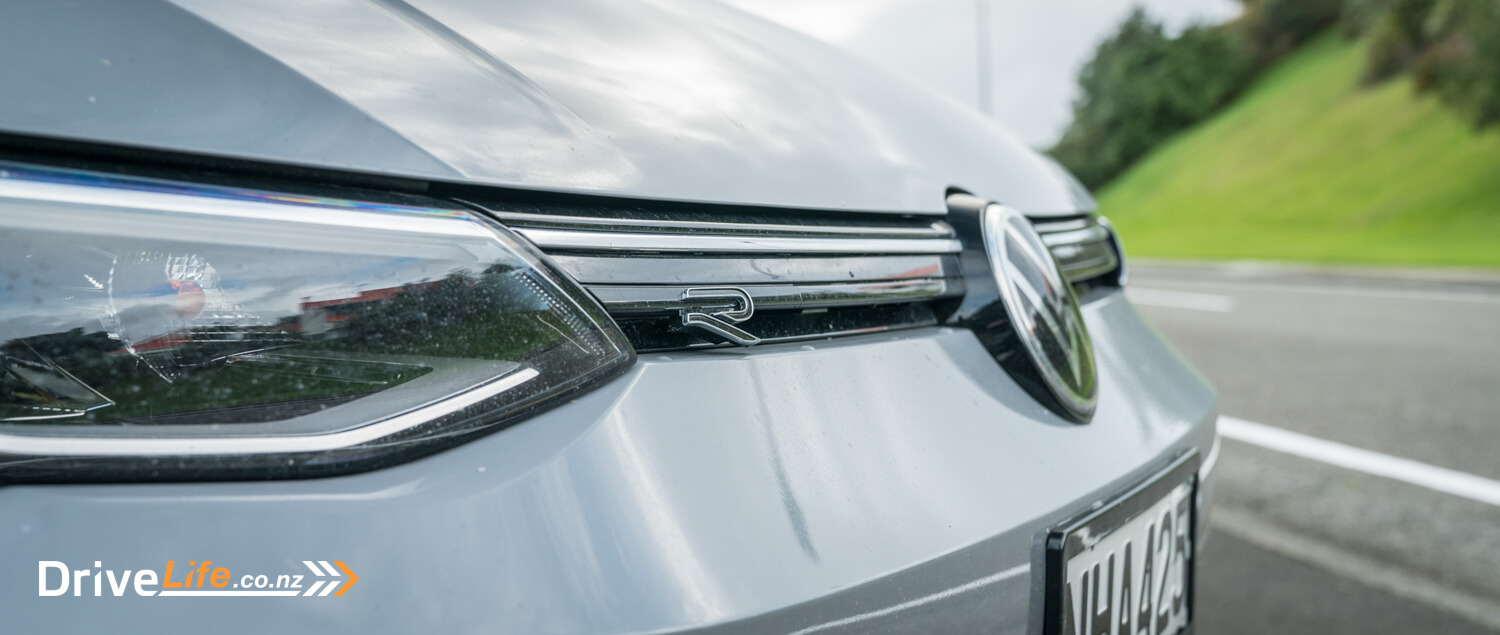


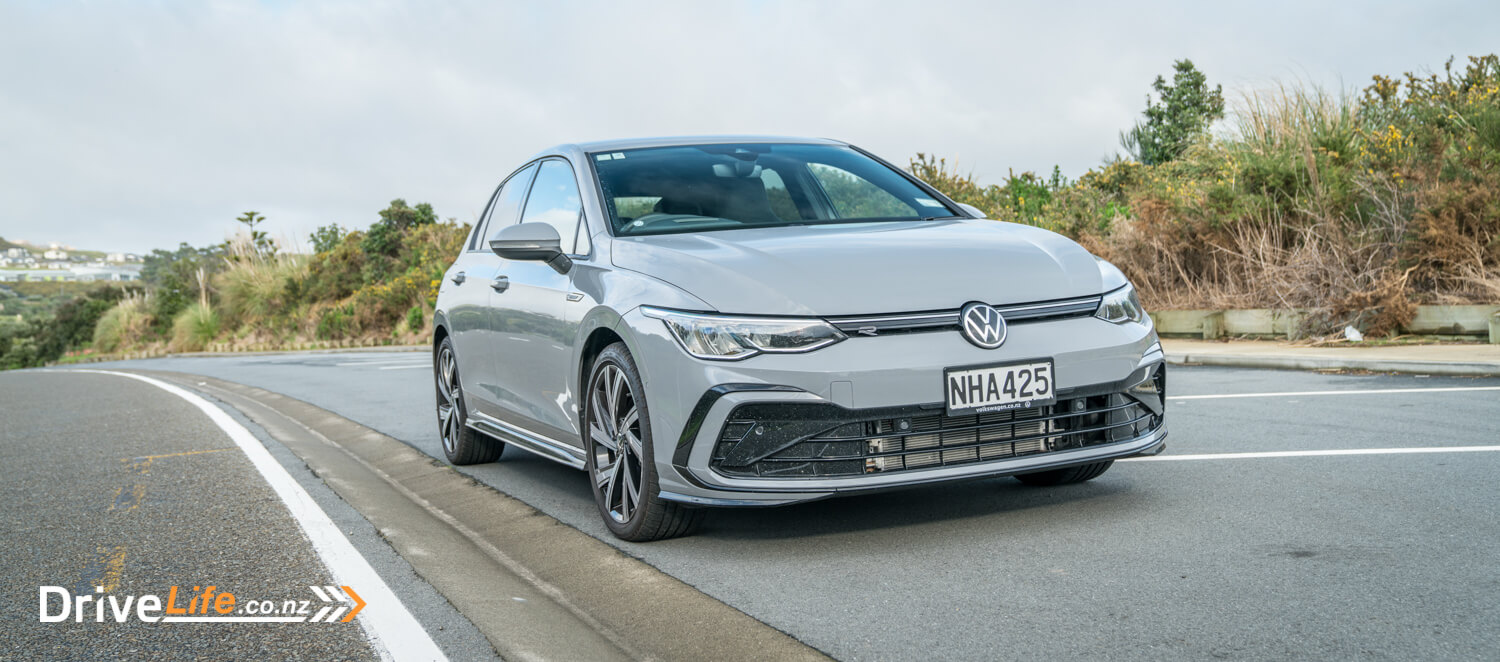






Great review except that the Golf 8 110TSI’s auto is not a DSG, rather a torque converter from Aisin. Same with the Skoda Karoq.
Thanks that was my assumption, I’ll correct it now.
From what I can tell, VW have badged the R-Line with R badges with nothing else to indicate that this isn’t the actual R car externally (apart from the Golf badge under the VW logo on the boot). Am I wrong in thinking this? That’s pretty poor form from VW. The MK7 had no R-Line badges, the 7.5 R-Line had badges that clearly showed they were R-Line cars NOT the full fat R. Not terribly impressed with that.